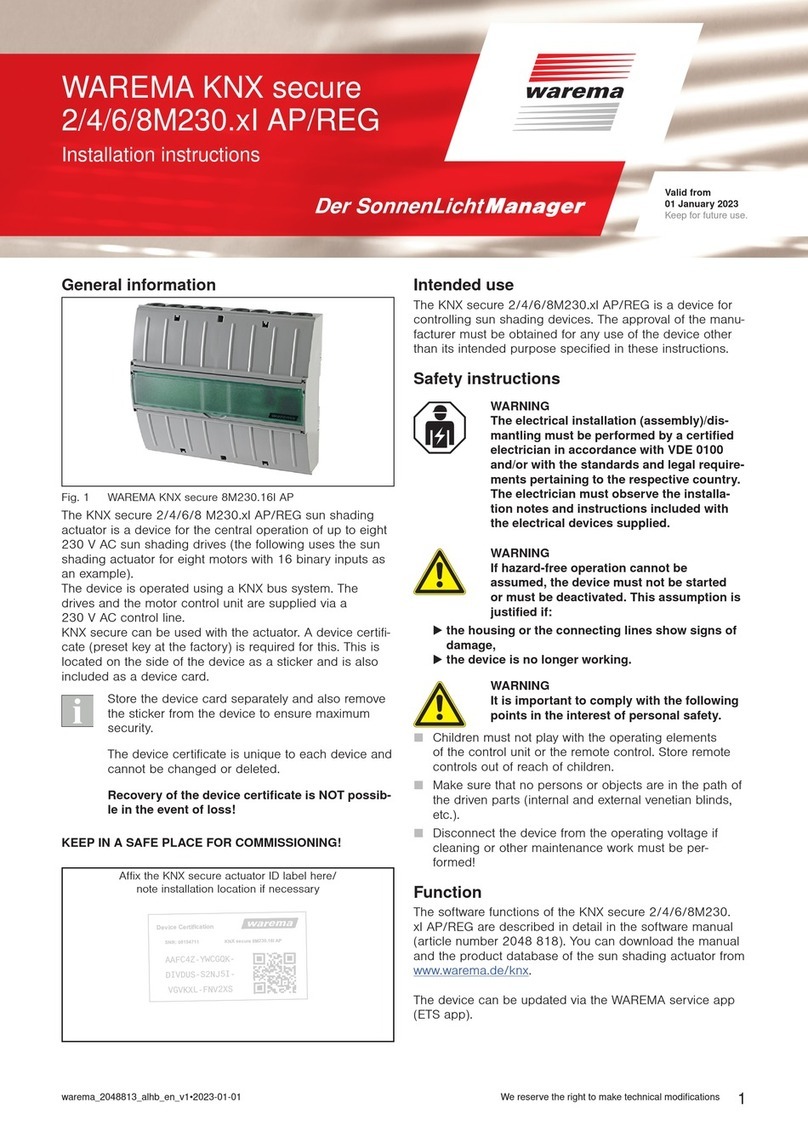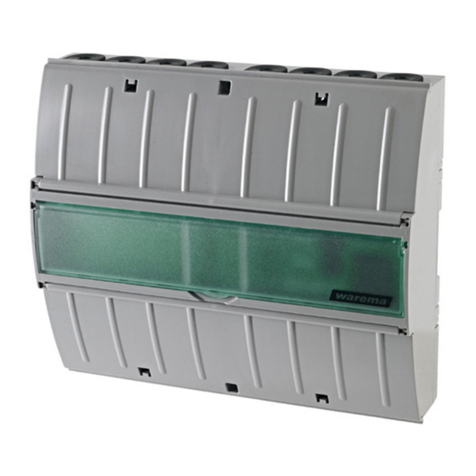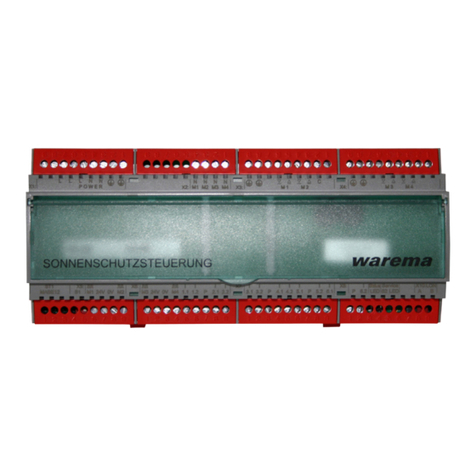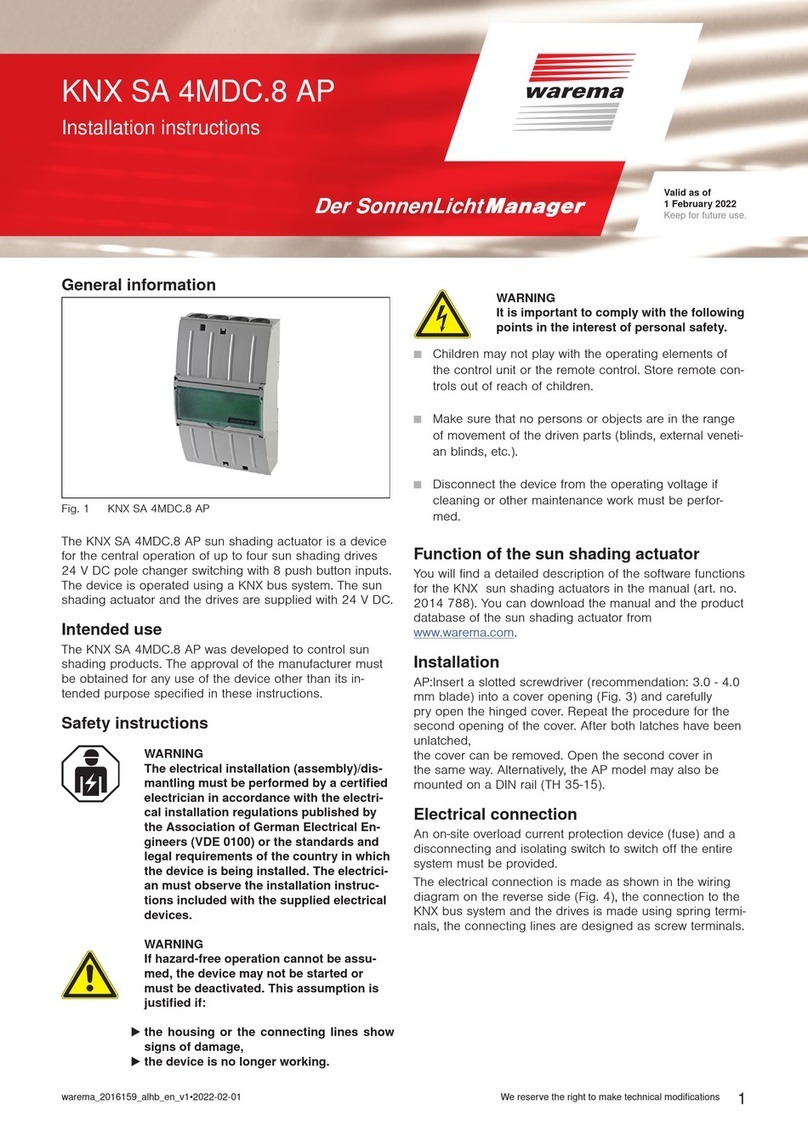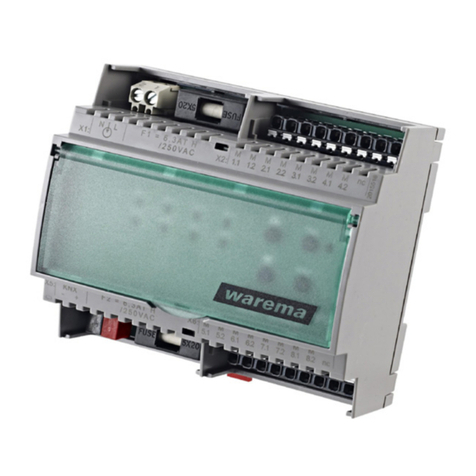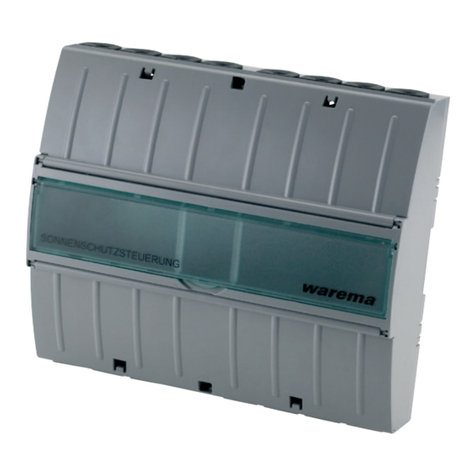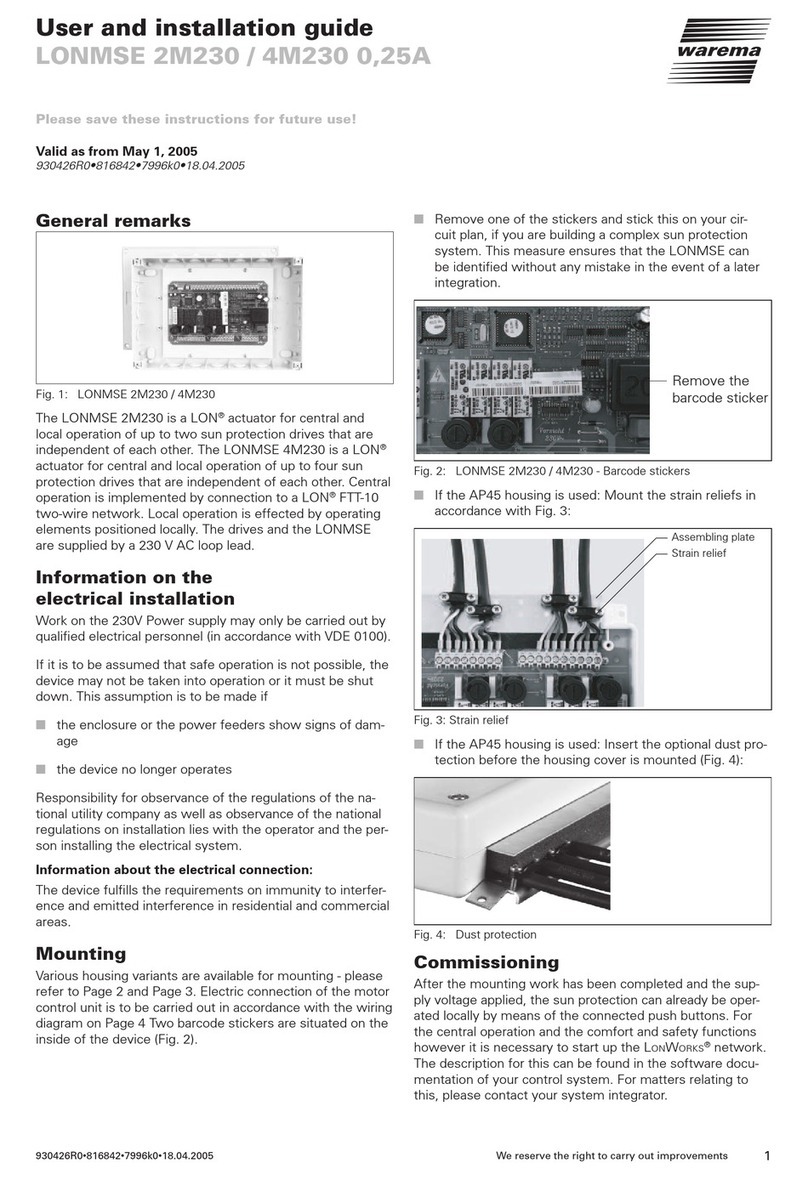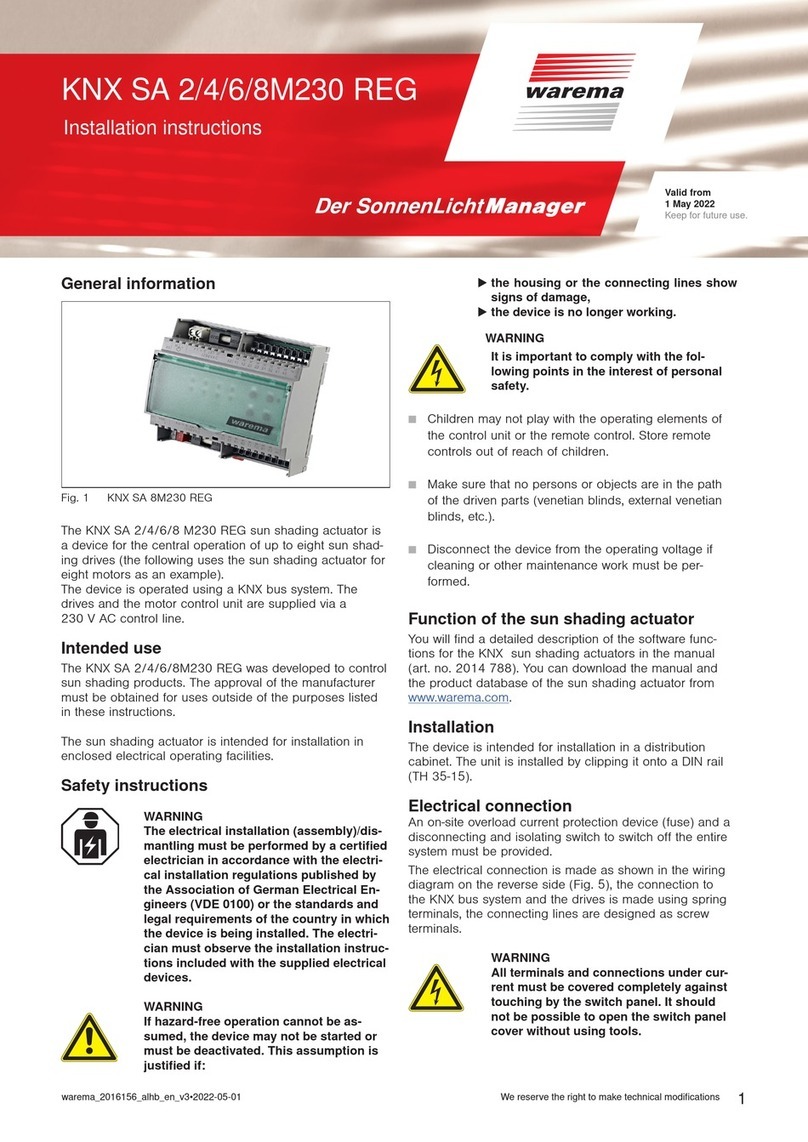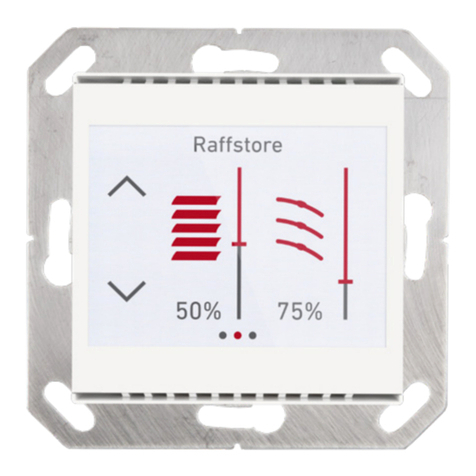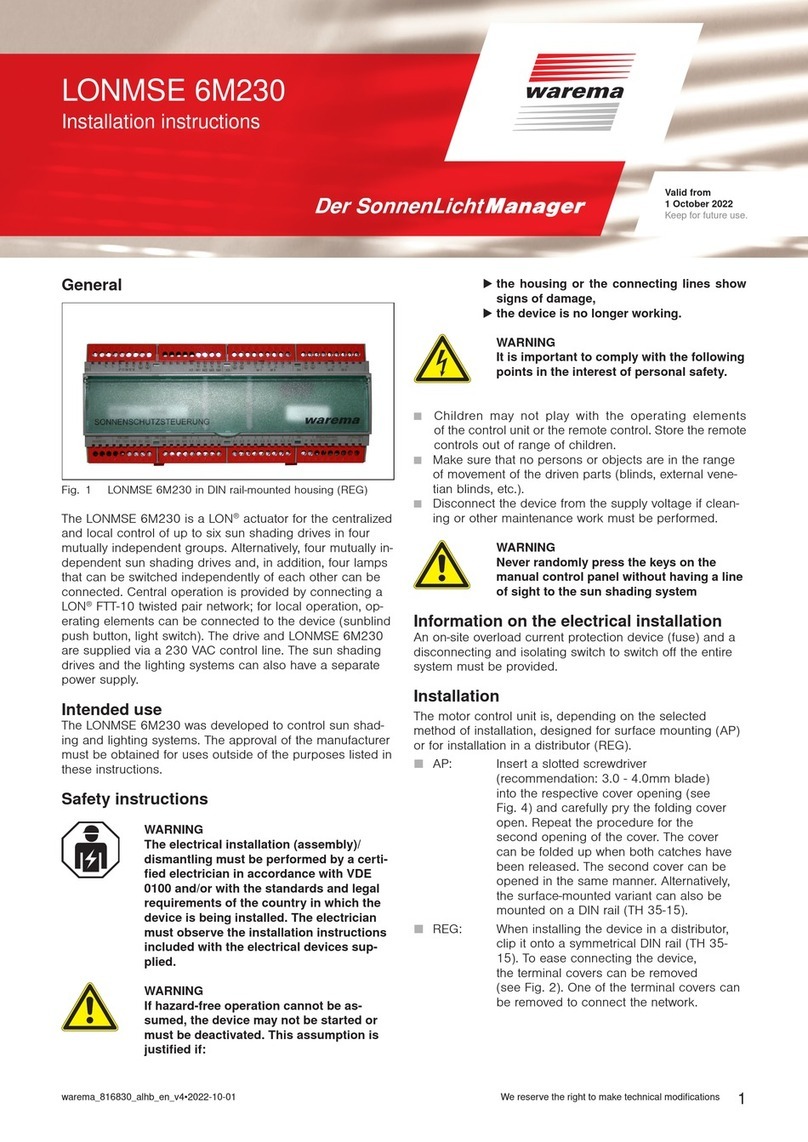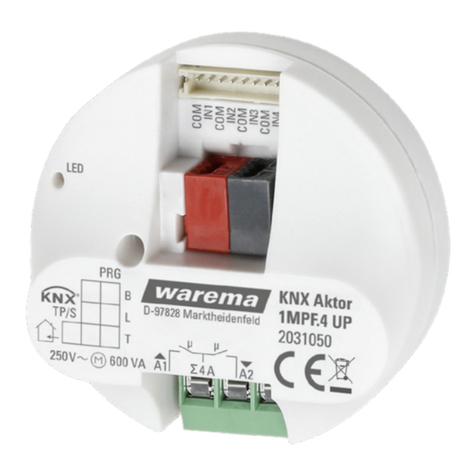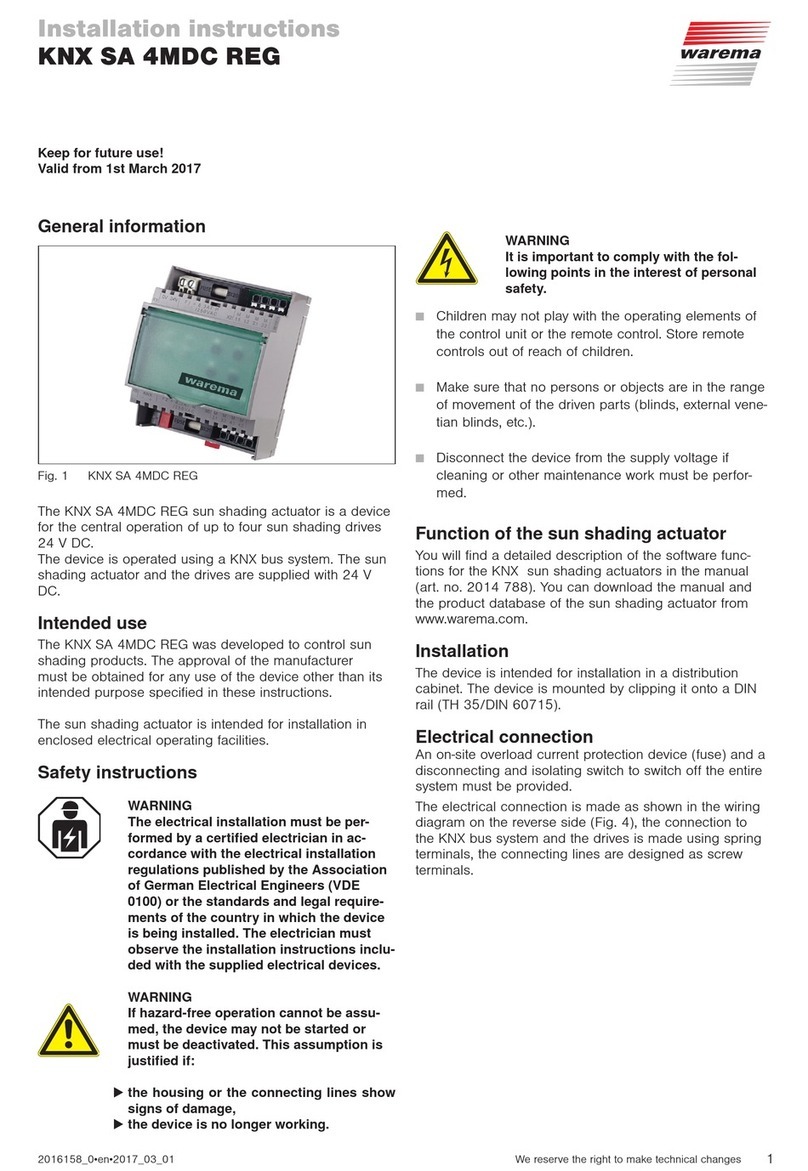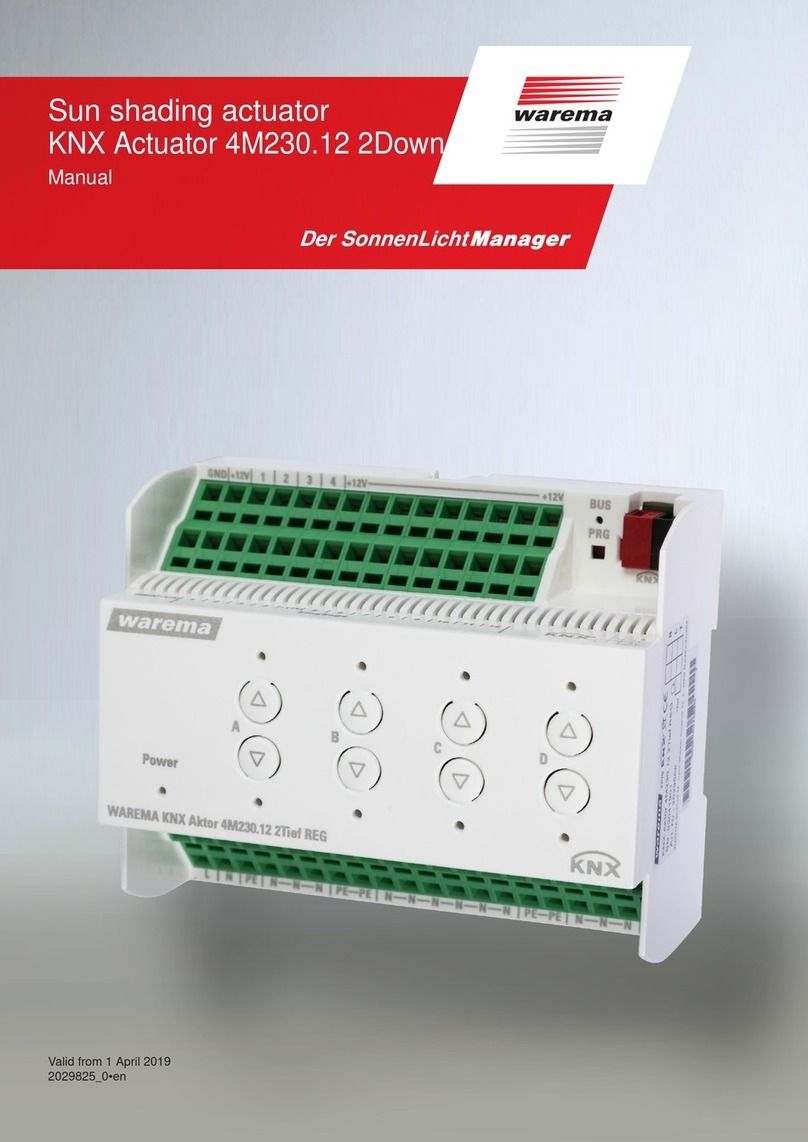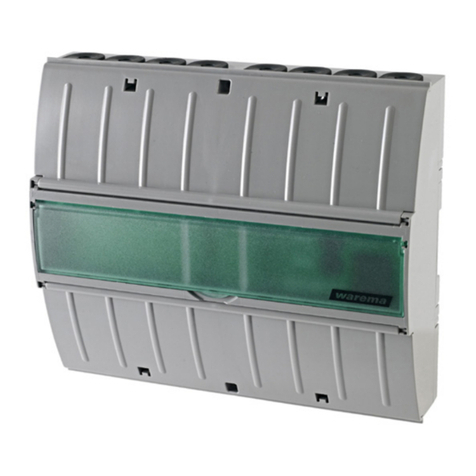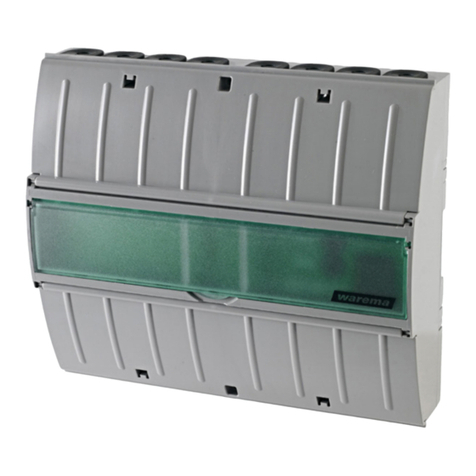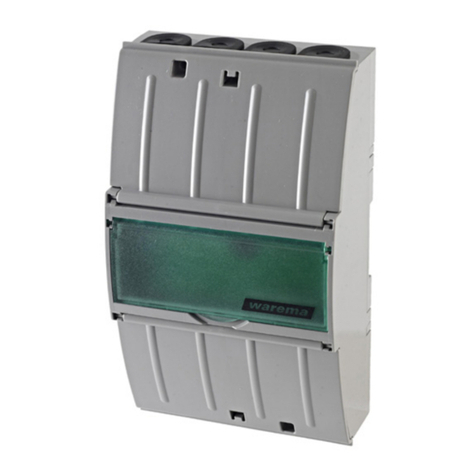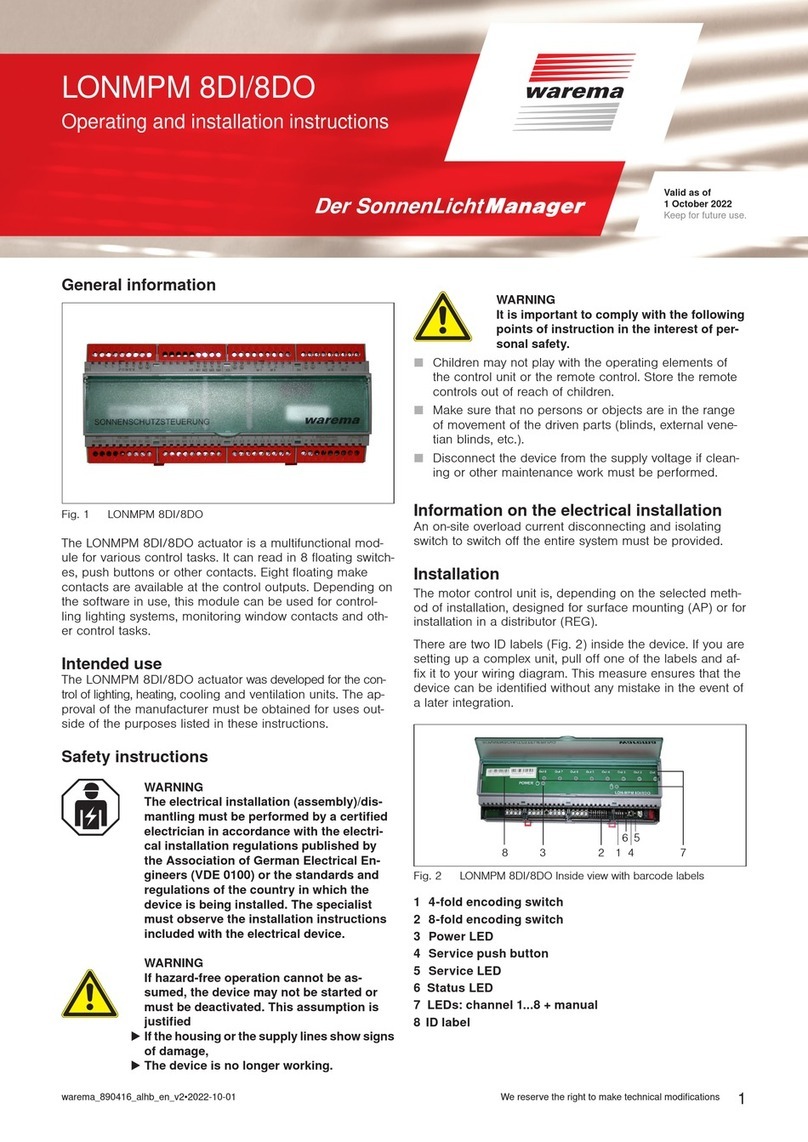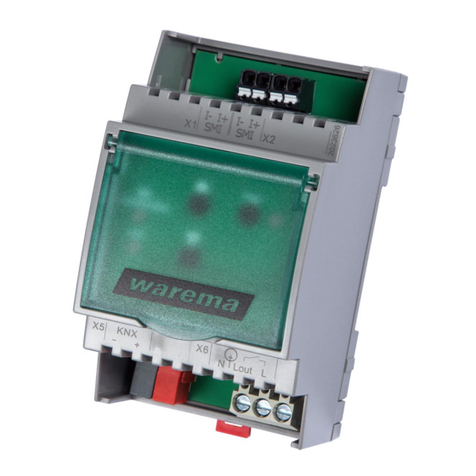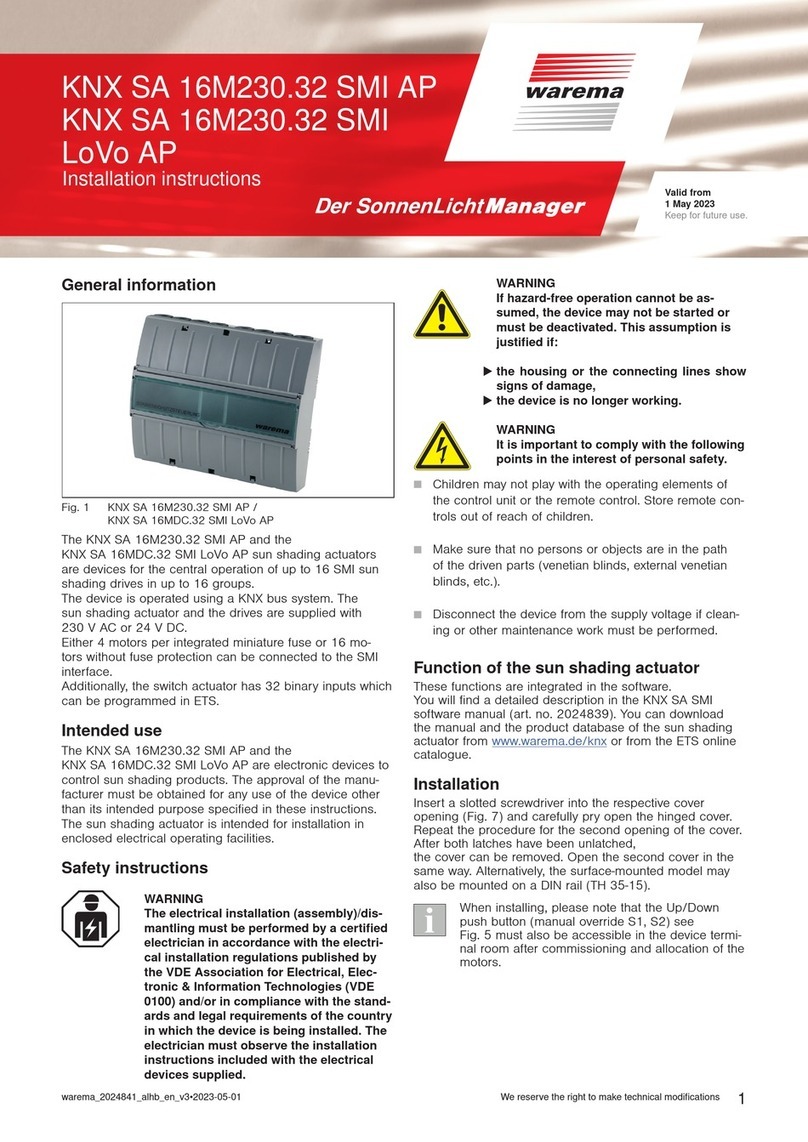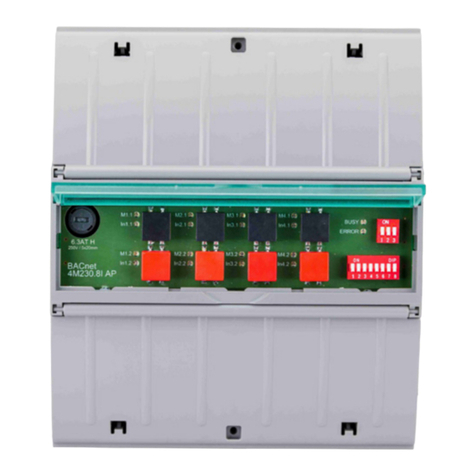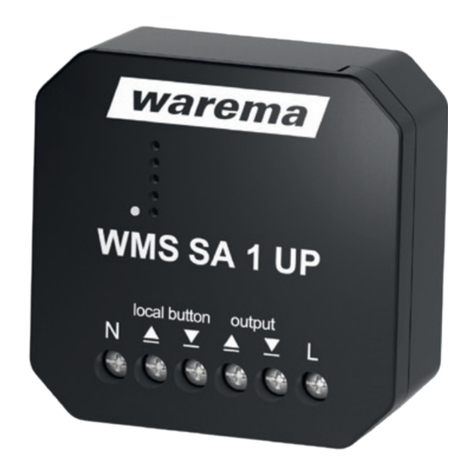
816859_d•en•2015-11-01We reserve the right to carry out improvements
2
Installation
The motor control unit is, depending on the selected
method of installation, designed for surface mounting (AP)
or for installation in a distributor (REG).
Surface-mounted housing (AP)
Insert a slotted screwdriver (recommendation:
3.0 - 4.0mm blade) into the respective cover opening
(see Fig. 4) and carefully pry the folding cover open.
Repeat the procedure for the second opening of the
cover. The cover can be folded up when both catches
have been released. The second cover can be opened
in the same manner. Alternatively, the surface-mounted
variant can also be mounted on a DIN rail (TH 35-15
as per EN 60715: 2001).
DIN rail-mounted housing (REG)
When installing the device in a distributor, clip it onto a
symmetrical DIN rail (TH35as per EN 60715: 2001).
To ease connecting the device, the terminal covers can
be removed (see Fig. 2). One of the terminal covers
can be removed to connect the network.
Remove the terminal covers:
Insert a suitable screwdriver
into the notch.
Fig. 2 Removing the terminal covers (REG variant)
Electrical installation
An on-site overload current protection device (fuse) and a
disconnecting and isolating switch to switch off the entire
system must be provided.
The motor control unit is electrically connected according to
the wiring diagram on the back of this page (see Fig. 6 and
Fig. 7).
Commissioning
After installation has been completed and the supply volt-
age has been connected, the device can be operated via
the optionally available manual control panel MABE12.
In the REG and the FT variant, operation is also possible
using a membrane keyboard (Fig. 3).
Local operation
The membrane keyboard of the REG and the FT variant
consists of 12 buttons, each with an integrated LED:
1
A1.1 A2.1
A1.2 A2.2
23456
Fig. 3 Membrane keyboard
Upon delivery, all outputs can be operated in dead man's
mode (jog mode, when the button is released, the re-
spective relay drops out immediately). When a button is
pressed, the respective LED lights up. Immediately thereaf-
ter, the relay begins operating and the associated output is
switched accordingly. Outputs A1.1 and A1.2 and outputs
A1.2 and A2.2 are locked in the software (safety feature).
This can be changed by adjusting the configuration later.
The HIGH and LOW outputs of channels 3 to 6 are inter-
locked electrically.
WARNING
Never randomly press the keys on the
membrane keyboard without having a line
of sight to the sun shading system. When
you work with the manual control panel,
you will not receive visual feedback about
the state of the relay because there are no
LEDs integrated in the control panel.
Programming
Press the programming button (Fig. 7) to put the
device into programming mode. The red LED lights
up when programming mode is active. The device is
programmed on a PC with the corresponding software.
This software ends the programming mode automati-
cally. The red LED goes out.
If the programming mode is to be ended earlier, press
the programming button again. The red LED goes out.
NOTE: Take suitable precautions to prevent damage
due to electrostatic discharge!
Maintenance
There are no parts within the device that require mainte-
nance. In the event of a malfunction, the built-in miniature
fuses should only be changed by a certified electrician.
Liability
In the event of the failure to comply with the product infor-
mation contained in these instructions, or if the device is
used in any manner other than its designated or intended
use, the manufacturer may refuse to honour warranty
claims for product damage. In this case, liability for con-
sequential harm to persons or damage to property will
also be excluded. Follow the instructions in the operating
manual of your sun shading system. Liability cannot be
accepted for damage to the sun shading system resulting
from operation while iced over.
Disposal
After its use, the device must be disposed of according to
legal regulations or returned to your local recycling centre.
KNX is a registered trademark of the KNXAssociation.
